 |
| Hillary Rodham Clinton (Wellesley College) (Photo credit: Wikipedia) |
Tuition to teach bloggers in oppressive states how to communicate freely...
AP – U.S. Secretary of State Hillary Rodham Clinton delivers a speech at the Conference on Internet Freedom, …
THE HAGUE, Netherlands – The European Unionshould help teach bloggers living under oppressive regimes how to communicate freely and avoid detection, and develop technology to help them, the bloc's digital affairscommissioner said Friday.
Speaking at an online free speech conference, Neelie Kroes said digital dissidents needtools that are "simple and ready-made."
"I want theEU to help develop and distribute thesetools," she said.
Governments, companies and civil liberties groups are meeting at the Freedom Online conference at the DutchForeign Ministry in hopes of creating a coalition of like-minded groups to promote Internet freedoms.
Bloggers and users of social networks played a key role in fomenting the revolutions of the "Arab Spring" — and took great risks.
In an emotional speech, Syrian blogger Amjad Baiazy said his country's surveillance system was built by Western companies. He said he was arrested and tortured in Mayfor expressing his opinion online, and a friend was arrested as recently as this weekfor a Facebook posting. He called on governments to fightfor "security of citizens, not corporations or governments."
On Thursday U.S. Secretary of State Hillary Clinton opened the conference with a callfor companies not to sell surveillancetools to authoritarian regimes.
Dutch member of parliament Marietje Schaake echoed Clinton's call, saying that companies "with a reputation to lose" — such as Google, one of the conference's sponsors — are more likely to heed it.
However, she said less well-known companies may need incentives or laws to restrain them.
She said it was ironic there is also conference being held this week in Kuala Lumpur, Malaysia, aimed at disseminating advanced surveillance techniques.
"We need to get ahead of the curve," she said. "Some governments curb freedom before the Internet fully arrives there."
Schaake also slammed the U.S.for its proposed "Stop Online Piracy Act," which would require U.S. telecommunications companiesto block access toforeign-based websites that infringe U.S. copyrights.
This will "give great incentives to governments like China to do the same," she said, blocking political speech they don't approve and arguing that their censorship practices are no different than those in the West.
Karen Reilly of the TOR project, which helps Internet users browse the web anonymously, said governments should listen less to the copyright lobby. She said her organization could use assistance in answering technical questions in local languages, noting that addition of a Persian service had opened up a flood of communication from Iran.
Among concrete actions taken Friday, the Dutch governmentpledgedeuro1 million ($1.3 million) to develop "mesh" networks — networks that use mobile phones to create a backup system to disseminate information when a government tries to block the Internet or social networks. He named Syria, Iran and Zimbabwe as target countries.
Acknowledgements: Associated Press
The Riverman Reports
http://blogevolve.com/huttriver12
AP – U.S. Secretary of State Hillary Rodham Clinton delivers a speech at the Conference on Internet Freedom, …
THE HAGUE, Netherlands – The European Unionshould help teach bloggers living under oppressive regimes how to communicate freely and avoid detection, and develop technology to help them, the bloc's digital affairscommissioner said Friday.
Speaking at an online free speech conference, Neelie Kroes said digital dissidents needtools that are "simple and ready-made."
"I want theEU to help develop and distribute thesetools," she said.
Governments, companies and civil liberties groups are meeting at the Freedom Online conference at the DutchForeign Ministry in hopes of creating a coalition of like-minded groups to promote Internet freedoms.
Bloggers and users of social networks played a key role in fomenting the revolutions of the "Arab Spring" — and took great risks.
In an emotional speech, Syrian blogger Amjad Baiazy said his country's surveillance system was built by Western companies. He said he was arrested and tortured in Mayfor expressing his opinion online, and a friend was arrested as recently as this weekfor a Facebook posting. He called on governments to fightfor "security of citizens, not corporations or governments."
On Thursday U.S. Secretary of State Hillary Clinton opened the conference with a callfor companies not to sell surveillancetools to authoritarian regimes.
Dutch member of parliament Marietje Schaake echoed Clinton's call, saying that companies "with a reputation to lose" — such as Google, one of the conference's sponsors — are more likely to heed it.
However, she said less well-known companies may need incentives or laws to restrain them.
She said it was ironic there is also conference being held this week in Kuala Lumpur, Malaysia, aimed at disseminating advanced surveillance techniques.
"We need to get ahead of the curve," she said. "Some governments curb freedom before the Internet fully arrives there."
Schaake also slammed the U.S.for its proposed "Stop Online Piracy Act," which would require U.S. telecommunications companiesto block access toforeign-based websites that infringe U.S. copyrights.
This will "give great incentives to governments like China to do the same," she said, blocking political speech they don't approve and arguing that their censorship practices are no different than those in the West.
Karen Reilly of the TOR project, which helps Internet users browse the web anonymously, said governments should listen less to the copyright lobby. She said her organization could use assistance in answering technical questions in local languages, noting that addition of a Persian service had opened up a flood of communication from Iran.
Among concrete actions taken Friday, the Dutch governmentpledgedeuro1 million ($1.3 million) to develop "mesh" networks — networks that use mobile phones to create a backup system to disseminate information when a government tries to block the Internet or social networks. He named Syria, Iran and Zimbabwe as target countries.
Acknowledgements: Associated Press
The Riverman Reports
http://blogevolve.com/huttriver12






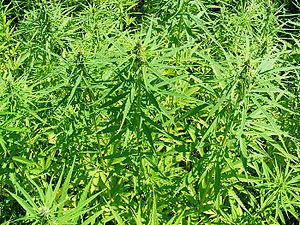

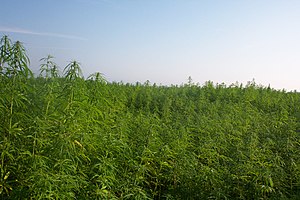





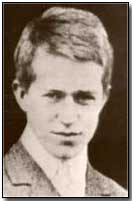 In recent years the life and achievements of
In recent years the life and achievements of 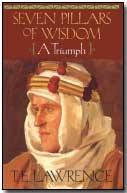 This indignity was more often inflicted on members of the officer class in the belief it robbed them of their authority as a leader of men, sometimes resulting in the victims suicide. Gang rape was also considered a means of punishment in some cultures, the Romans, Persians,
This indignity was more often inflicted on members of the officer class in the belief it robbed them of their authority as a leader of men, sometimes resulting in the victims suicide. Gang rape was also considered a means of punishment in some cultures, the Romans, Persians, 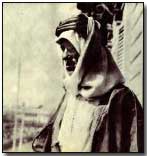 The post traumatic effects of same sex rape often last a lifetime, T.E. Lawrence manifested all the classic symptoms: workaholism, "depression, anger, increased sense of vulnerability, destructive self image, emotional distancing" [2]
The post traumatic effects of same sex rape often last a lifetime, T.E. Lawrence manifested all the classic symptoms: workaholism, "depression, anger, increased sense of vulnerability, destructive self image, emotional distancing" [2] Any figure who remained unmarried, had close same sex friendships or acted in a way perceived flamboyant by modern standards is automatically presumed homosexual.
Any figure who remained unmarried, had close same sex friendships or acted in a way perceived flamboyant by modern standards is automatically presumed homosexual.
Morals
Guest post:
piteously for hours as the farmer tried to figure out what to do.
Finally, he decided the animal was old, and the well needed to be covered
up anyway; it just wasn't worth it to retrieve the donkey. He invited all his neighbors to come over and
help him. They all grabbed a shovel and began to shovel dirt into the
well.
At first, the donkey realized what was happening and cried horribly. Then,
to everyone's amazement he quieted down. A few shovel loads later, the
farmer finally looked down the well. He was astonished at what he saw.
With each shovel of dirt that hit his back, the donkey was doing something
amazing. He would shake it off and take a step up. As the farmer's neighbors continued to shovel dirt on top of the animal,
he would shake it off and take a step up. Pretty soon, everyone was amazed as the donkey stepped up over
the edge of the well and happily trotted off!
Life is going to shovel dirt on you, all kinds of dirt. The trick to
getting out of the well is to shake it off and take a step up. Each of our troubles is a steppingstone.
We can get out of the deepest wells just by not stopping, never giving up!
Shake it off and take a step up.
Remember the five simple rules to be happy:
1. Free your heart from hatred - Forgive.
2. Free your mind from worries - Most never happen.
3. Live simply and appreciate what you have.
4. Give more.
5. Expect less
NOW --------
Enough of that cr*p . .
The donkey later came back and bit the sh*t out of
the farmer who had tried to bury him. The gash from the
bite got infected, and the farmer eventually died in
agony from septic shock.
MORAL FROM TODAY'S LESSON:
When you do something wrong and try to cover your
ass, it always comes back to bite you.